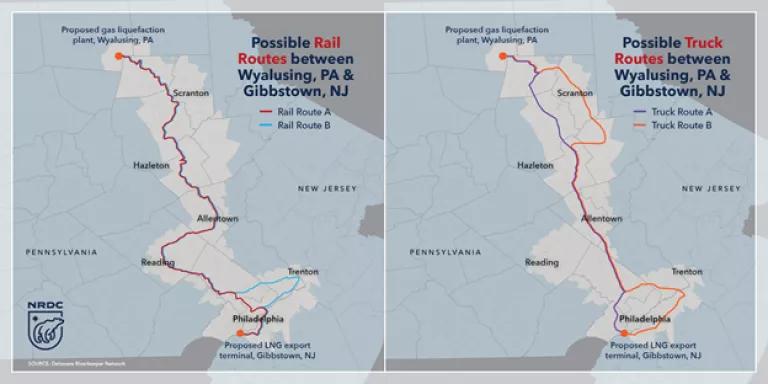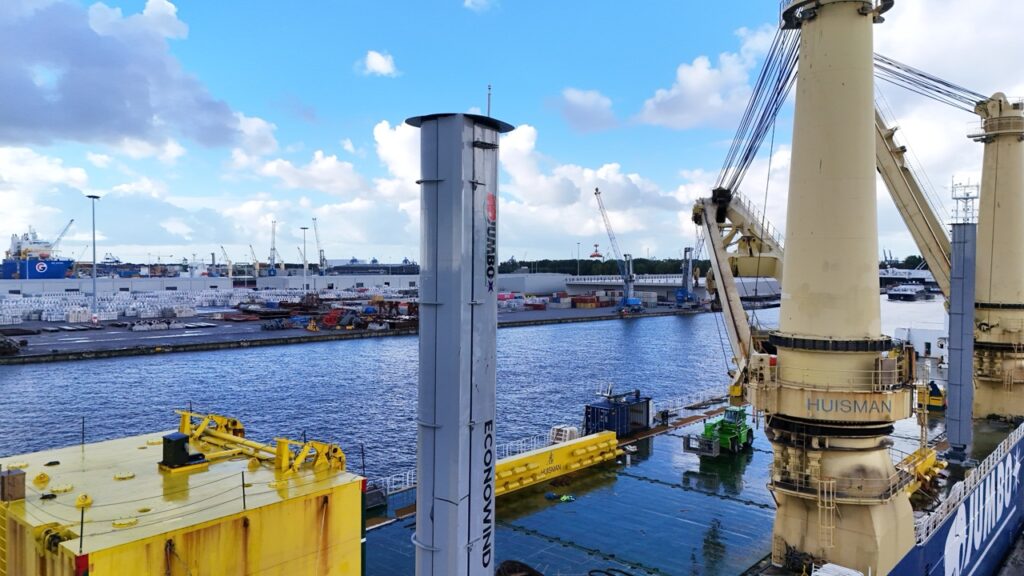
After over a year of waiting, the U.S. Department of Transportation (DOT) has suspended the rule promulgated under the Trump administration that allowed the transport of liquefied natural gas (LNG) by rail across the country without a special permit. This is a huge victory for the planet and for communities living in the potential blast zones of these rail lines.
LNG transport by rail would expose nearby communities to the risk of destructive explosions, choking clouds, and uncontrollable fires. Just 22 tank cars of LNG hold explosive energy equivalent to the Hiroshima atomic bomb. And this practice does not only threaten the communities living in its vicinity; a natural gas project on this scale will also accelerate the burning of dirty fossil fuels and exacerbate the global climate crisis. LNG consists of methane, which is a greenhouse gas over 80 times more potent at warming the planet than carbon dioxide over a 20-year period.
Prior to the now-suspended rule, the U.S. Department of Transportation had banned the transport of LNG by rail unless those doing so could obtain a special permit; this at least meant developers had to propose their specific projects to DOT for case-by-case scrutiny and an opportunity for public input. But President Trump broke with decades of bipartisan precedent and passed a broad authorization allowing explosive LNG trains to proceed through communities across America without any of this project-specific analysis or opportunity to voice concerns.
While this decision affected the entire country, it hit particularly hard for communities in the Northeast, where gas developer New Fortress Energy is pushing a massive LNG export project that consists of a “virtual pipeline” of trains and trucks carrying LNG over 200 miles from Wyalusing, PA, to an export terminal in Gibbstown, NJ, right across the Delaware River from Philadelphia. This project would be the first to transport such huge quantities of LNG by rail over long distance. By relying on rail, the developers avoid the relatively stricter regulations and environmental review required to construct a pipeline—and they also put the nearly 2 million people living in communities along rail lines at risk of harm. The East Palestine, OH, derailment earlier this year, which involved a train carrying similarly volatile hazardous substances, was just a taste of the devastation that could occur if an accident were to befall a train carrying thousands of gallons of LNG.

These maps show the potential routes that LNG trucks and trains might take from Wyalusing to Gibbstown. Credit:Delaware Riverkeeper Network
Thankfully, the Biden Administration moved to suspend the rule that allowed LNG by rail shortly after taking office. However, unexplained delays caused DOT to push finalization of the suspension from June 2022 to December 2022 to March 2023 before ultimately releasing it on September 1, 2023. DOT has also said it will permanently replace the now-suspended rule with a new one that incorporates the latest research on LNG and rail safety; while this was initially due in September 2022, DOT delayed its proposal to January 2023, and then to March 2023. DOT has yet to announce when it will publish this proposed replacement rule. But the suspension will only remain in effect until June 30, 2025, or when DOT finalizes this replacement LNG-by-rail regulation. Essentially, DOT has less than two years to propose, hear comments on, and finalize a new LNG-by-rail regulation before the suspension of the Trump-era rule runs out.
NRDC and many other advocates have been hard at work pushing PHMSA to finalize the suspension as promised. Communities in New Jersey and Pennsylvania have demanded an immediate return to a ban on LNG-by-rail. Seven members of Pennsylvania’s congressional delegation have urged DOT to suspend the rule allowing LNG transport by rail. Eighteen New Jersey municipalities, eleven Pennsylvania local governments, and two Delaware municipalities have passed resolutions against LNG-by-rail. NRDC’s own action alert urging its members to call on Secretary Buttigieg to suspend the LNG-by-rail rule prompted over 8,000 actions. And a petition for a ban put together by a coalition of environmental organizations including Delaware Riverkeeper Network, Berks Gas Truth, Catskill Mountainkeeper, Clean Water Action, and Food & Water Watch, has already garnered more than 10,000 signatures. Now that the suspension is finally in place, we can turn our attention to the next phase of this fight: making sure that Transportation Secretary Buttigieg and DOT implement a replacement rule that fully prohibits LNG transport by rail to protect our communities and environment.
This blog provides general information, not legal advice. If you need legal help, please consult a lawyer in your state.
By Sahana Rao, NRDC.
I don’t like paywalls. You don’t like paywalls. Who likes paywalls? Here at CleanTechnica, we implemented a limited paywall for a while, but it always felt wrong — and it was always tough to decide what we should put behind there. In theory, your most exclusive and best content goes behind a paywall. But then fewer people read it! We just don’t like paywalls, and so we’ve decided to ditch ours. Unfortunately, the media business is still a tough, cut-throat business with tiny margins. It’s a never-ending Olympic challenge to stay above water or even perhaps — gasp — grow. So …




